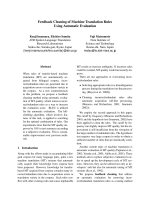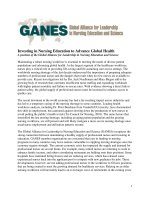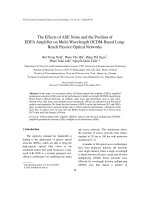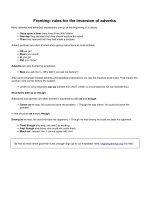Position of adverbs detailed rules
Bạn đang xem bản rút gọn của tài liệu. Xem và tải ngay bản đầy đủ của tài liệu tại đây (12.34 KB, 1 trang )
Position of Adverbs – Detailed Rules
Different kinds of adverbs go in different positions in a sentence. Here are
some general rules.
Adverbs cannot go between a verb and its object.
He speaks English well. (NOT He speaks well English.)
I often visit my parents. (NOT I visit often my parents.)
An adverb particle (e.g. up, down, off, on etc.) can go between a verb and
its object.
She switched off the light. OR She switched the light off.
An adverb can go in three positions:
1. At the beginning of a clause
2. With the verb (mid-position)
3. At the end of the a clause
Many adverbs can go in all three positions. Some adverbs can go in mid- and
end positions. Longer adverb phrases do not usually go in mid-position.
Adverbs that can go at the beginning of a clause
Adverbs which join a clause to what came before usually go at the beginning.
Examples are: however, then, next, besides, anyway etc.
Some of us wanted to go on a picnic; however, John did not like the idea.
He finished his work. Then he went home.
Mid-position is also possible in a formal style.
He then went home.
He, however, didn’t like the idea.
The adverbs usually, normally, often, frequently, sometimes and occasionally can go at the beginning or end
of a clause.
Sometimes I think I should find a better job.
Often I get headaches.
Adverbs of place can also go at the beginning of a clause, especially in
literary writing.
At the end of the street there was a toy store.
Stay on top of your writing! Download our grammar guide from www.englishgrammar.org to stay up-to-date.
Powered by TCPDF (www.tcpdf.org)









